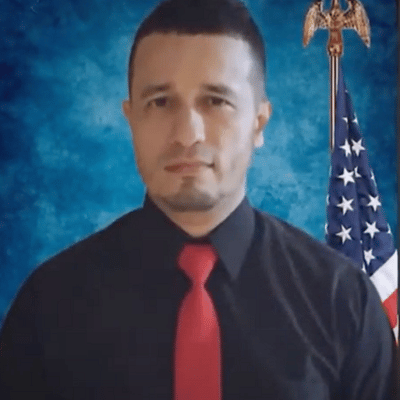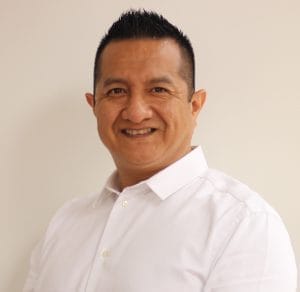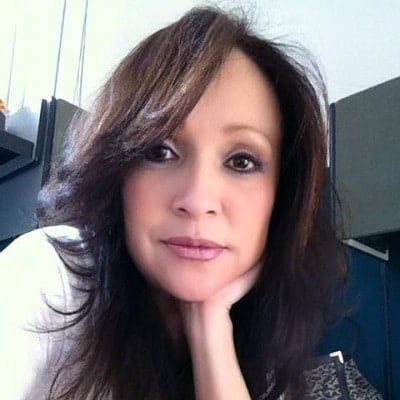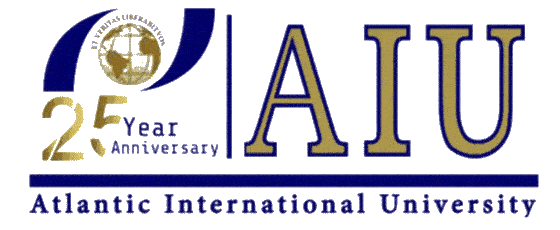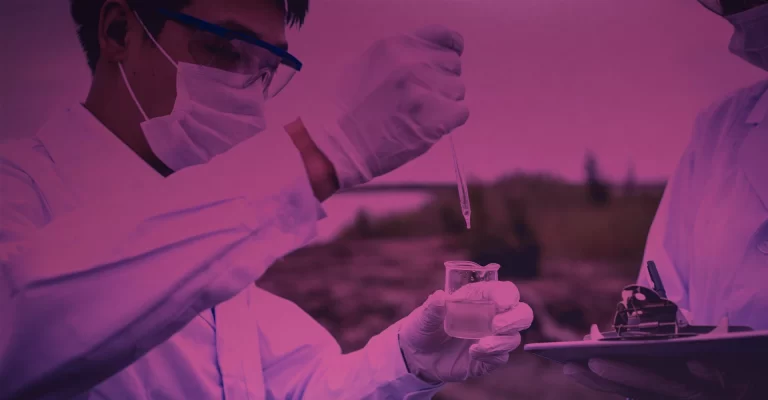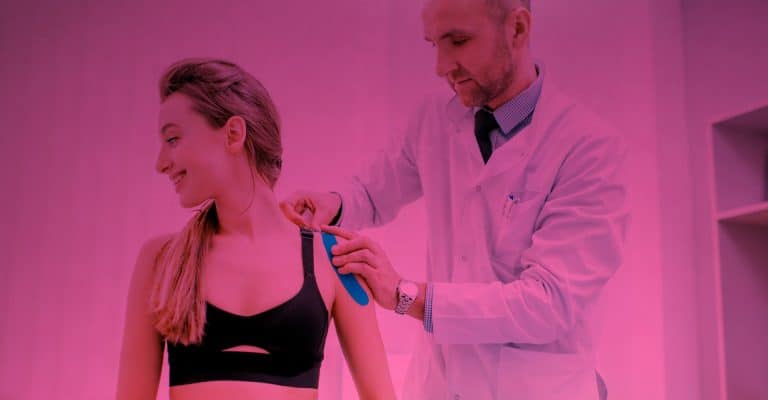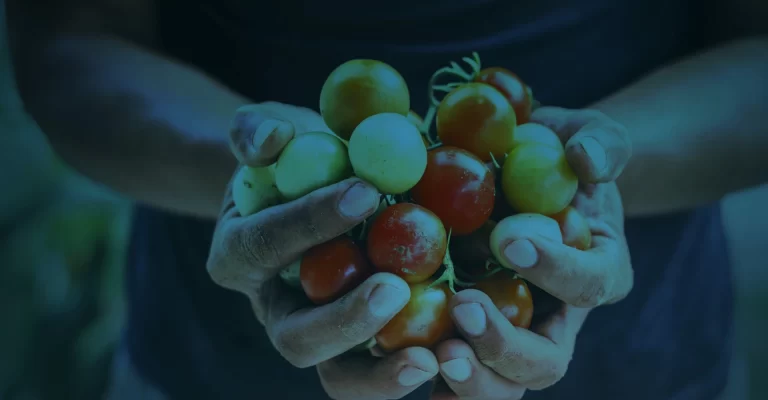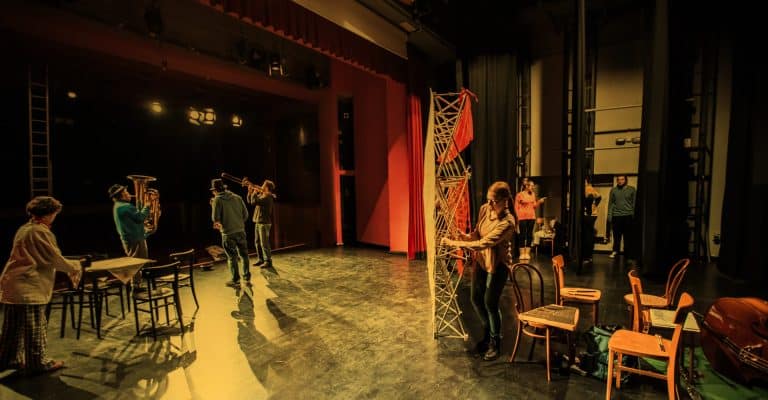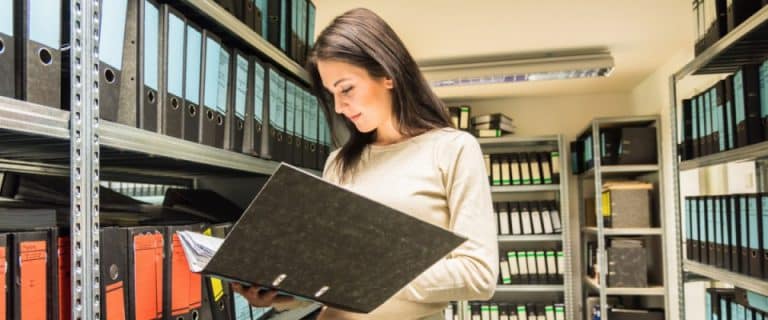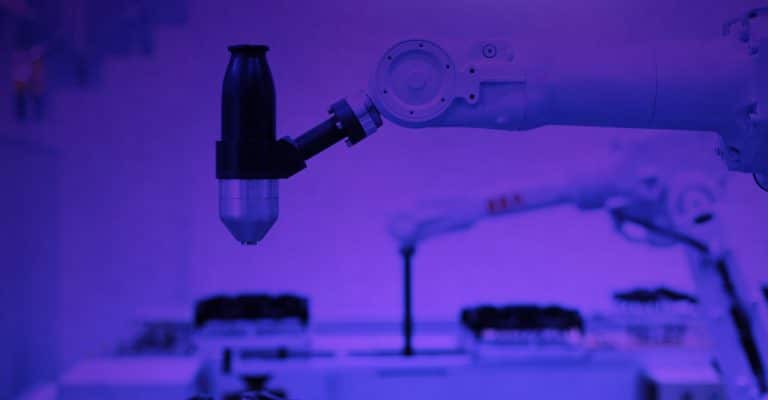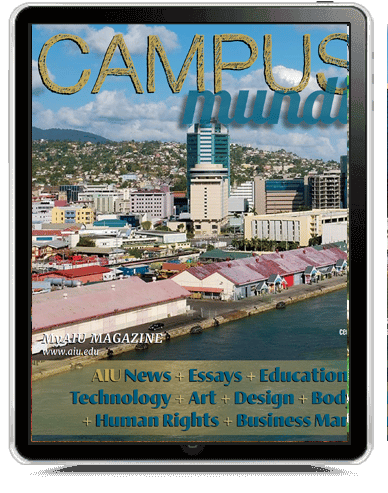

June 2022 Edition!
AIU News + Essays + Education + Culture + Science + Technology + Art + Design + Body + Mind + Environment + Human Rights + Animal Rights + Project Management + About AIU
New member of the Board
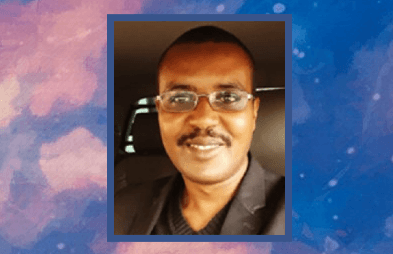
MAY 11, 2022. On March 23, Dr. Eduardo Viana was sworn in as a member of the Board of Directors of the PANAFSTRAG/ International-Pan- African Strategic And Policy Research Group. Dr. Viana demonstrated his willingness to work voluntarily with a team that is the Board, to overcome the challenges that Africa and Africans face, including those faced by people of African descent around the world. As can be seen on the institution’s website, “PANAFSTRAG was founded in 1992 to provide an in-depth study and analysis of the challenges of political stability, security and development in Africa and to propose policy options and strategies for these issues while synergizing the potentials of its diaspora to execute these policies.” Dr. Viana is the only Brazilian and South American member of the aforementioned Board, which further increases his responsibility and he is very happy with his appointment to the Board. He will do everything possible to help achieve the objectives of PANAFSTRAG. Dr. Eduardo Viana is completing a Doctorate in Legal Studies at Atlantic International University.
Graduated with Honors
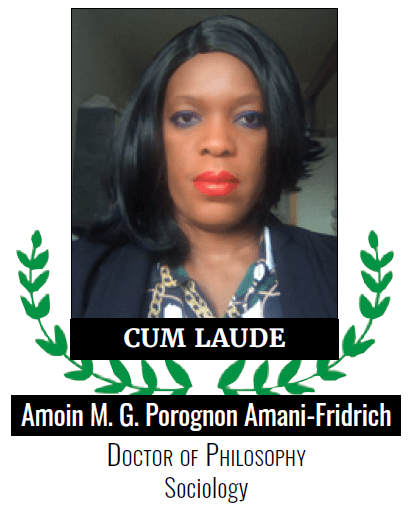
MAY, 2022. This graduate student completed the majority of the requirements to obtain honors, which included a 4.0 GPA, published works, recommendation from her respective advisors, patent a product, etc. Congratulations!
CUM LAUDE
Amoin M. G. Porognon Amani-Fridrich
Doctor of Philosop hy Sociology
Award
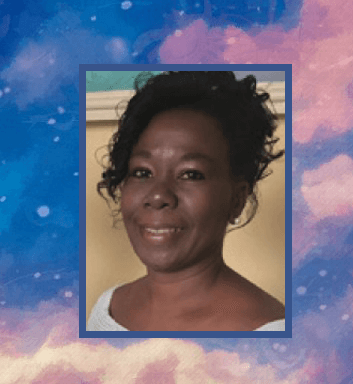
APRIL 29, 2022. The Latin American Studies Association has awarded AIU student, Kezia Zabrina Henry Knight, from Cuba, with an honorable mention award for the best Doctoral thesis in Cuban Studies. Kezia Zabrina is completing a Post-Doctorate Program in Social Change at Atlantic International University.
Goals to a better world
The goal of AIU is for you to develop your essence and your talents to live the purpose of your life. You will leave the most perfect legacy of your life to future generations. The AIU Pledge is to integrate the 17 goals of the UN into your life. These goals are the most important issues to improve life around the world. You are the peace, the abundance, the wisdom and the strength of the 17 goals. We want you to incorporate these 17 Goals into your life. You can find these goals here: https://sdgs.un.org/goals You may submit an essay, or even a PowerPoint presentation on the goals. You can present work that you did in the past or will do in the future. AIU always wants you to be Unique and Unrepeatable. By caring about the 17 goals of the United Nations, you will help humanity move toward its greater potential.
Graduated with Distinction
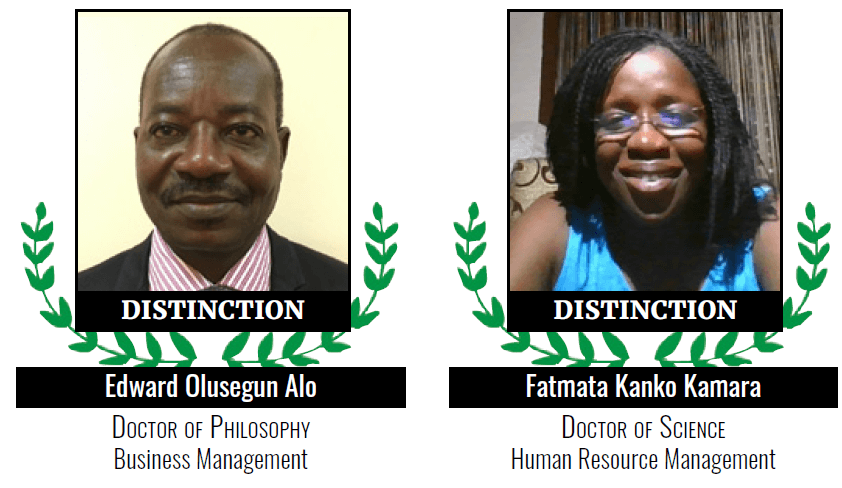
Edward Olusegun Alo
Doctor of Philosophy
Business Management
Fatmata Kanko Kamara
Doctor of Science
Human Resource Management

Bachelor of Science
Civil Engineering
Angola
Lokoho Empenge Didier
Master of Science
Project and Financial Management
Congo (DRC )
Amoin M. G. Porognon Amani-Fridrich
Doctor of Philosop hy
Sociology
Germany
Barak Tom Salakoff
Doctor of Education
Education
Israel
Edward Olusegun Alo
Doctor of Philosop hy
Business Management
Nigeria
Terence Chross
Master of Business Administration
Business Administration
Pap ua New Guinea
Bol Joseph Gangdit
Bachelor of Science
Computer Science
South Sudan
Varinderjeet Kaur
Master of Business Administration
Business Administration
Uganda
Jorge Ramon Llarrull
Doctor of Science
Public Health
Argentina
Claudia Giselle Echevarría Echevarría
Bachelor of Philosop hy
Philosophy
Dominican Republic
Abdul-Razak Yakah
Doctor of Philosop hy
Public Administration
Ghana
Lydiah Cherotich Korir
Bachelor of Science
Organizational Psychology
Kenya
Kingsley Joseph Omonobi
Master of International Relations
International Relations
Nigeria
Jimmy Franklin De Lama Vega
Bachelor of Finance
Finance
Peru
Santino Ngong Garang
Bachelor of Science
Health Care Administration
South Sudan
Jacqueline Naomi Felton
Doctor of Philosop hy
Healthcare Management
USA
Martial Fanga Agbor
Master of Arts
Political Science and African History
Cameroo n
Girard D. Vernaza Arroyo
Post-Doctorate of Science
Legal and Environmental Sciences
Ecuador
Dennis Baidoo Amponsah
Doctor of Philosop hy
Petroleum Economics
Ghana
Iddah Awuor Wawiye
Bachelor of Science
Forestry
Kenya
Ogundipe Akinyemi Akintunde
Doctor of Business Administration
Business Administration
Nigeria
Samuel Perez Moreno
Bachelor of Science
Psychology
Peru
Happiness Nompumelelo Magagula
Doctor of Business Administration
Business Administration
Swaziland
Juan Antonio Rodriguez III
Master of Business Administration
International Relations
USA
Doctor of Business Administration
Business Administration
Cayman Islands
Milton Fredy Astudillo
Master of Science
Electronic Engineering
Ecuador
Hugo David Natareno Barrios
Doctor of Management
Rural Development and Risk Management
Guatemala
Kaoxiong Songzacheng
Doctor of Science
Safety Engineering
Lao s
Hammed J. Sule
Doctor of Science
Telecommunications
Nigeria
Fatmata Kanko Kamara
Doctor of Science
Human Resource Management
Sierra Leone
Judeth M. Mc Leod-James
Doctor of Education
Higher Education Leadership
Trinidad and Toba go
Lizandra Ramirez Valerio
Bachelor of Accounting
Accounting
USA
Amos Belony
Bachelor of Science
Psychology
Chile
Sandra Beatriz Martínez Linares
Bachelor of Science
Psychology
El Salvador
Elmer Hernández y Hernández
Doctor of Economics
Economics
Guatemala
Molupe Christopher Mokhakala
Bachelor of Science
Security Management
Lesotho
Cyprian Evbanosi Adaba
Bachelor of Theology
Theology
Palau
Jeffrey Mustapha Moijueh
Master of Management
Hospitality and Tourism Management
Sierra Leone
Şerafettin Alaca
Bachelor of Science
Civil Engineering
Türkiye
Cesar Leonel Orellana Menendez
Master of Business Administration
Business Administration and Management
USA
Fabiola Andrea Aguayo Flores
Bachelor of Psychology
Clinical Psychology
Chile
Ngcebo Norman Mbuli
Doctor of Project Management
Project Management
Eswatini
Bakary Momodou Ceesay
Bachelor of Sociology
Sociology
Haiti
Gunther Julio Doll
Bachelor of Science
Mining Engineering
Namibia
Carlos Eduardo Gómez Velásquez
Master of Project Management
Project Management
Panama
Alhajie Brima Caulker
Doctor of Philosop hy
Humanities
Sierra Leone
Amongi Betty Ongom
Bachelor of Social and Humanities
Legal Studies
Uganda
Alejandra Muñoz Cardenas
Bachelor of Science
Psychology
USA
Find More Graduates

Testimonials
FIND MORE TESTIMONIALS FROM A I U STUDENTS HERE: https://wp24.aiu.edu/Testimonials.aspx
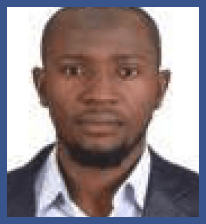
Abdulrazak Yusuf
Doctor of Accounting
March 8, 2022
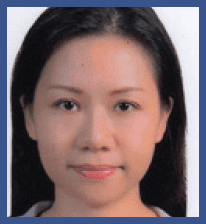
Yiying Liang
Master of Business Administration
March 17, 2022
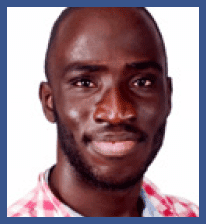
Abdulaleem A. Ademola-Osinuga
Bachelor of Business Administration
March 11, 2022
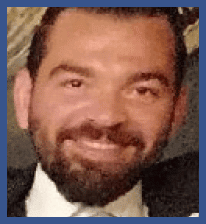
Ersan Asar
Bachelor of HR Management
March 18, 2022
Migration, urbanism and urban sprawal impacts in the context of African cities Kenneth Makanga | Doctorate's Degree in Environmental Science
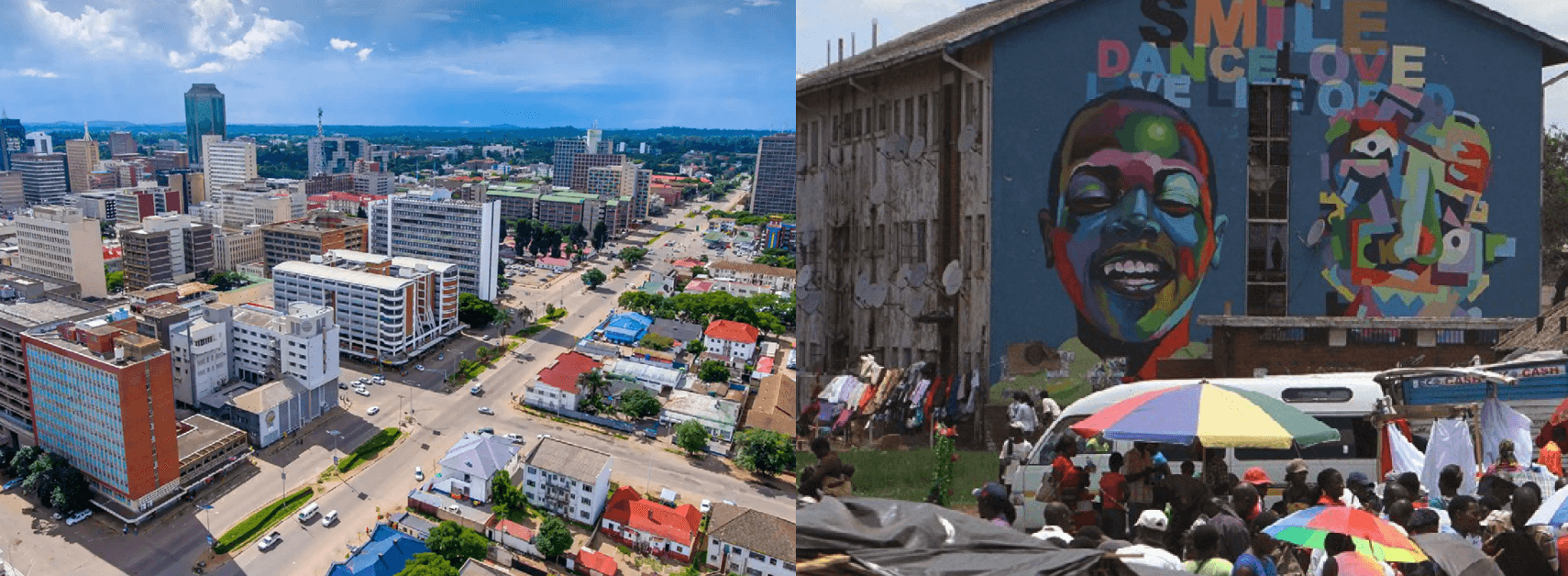
Harare is the capital of Zimbabwe and the largest city in the country. It is situated in the northwest of the country on central watershed. It is the seat of government and administrative centre for ten provinces. It is a focal point of road, rail, and air services. The site of Harare and its surrounding area was formerly part of the Shona chiefdom of Neharawa, after whom the city is named. White settlers arrived in the vicinity of the present city in 1890. On the 12 September 1890 they hoisted their flag Union Jack on the site of the Unity Square and the settlement and named it Fort Salisbury, after then British Prime Minister. The first buildings were erected near the foot of the kopje, but it was latter decided that the main centre should be in the causeway where most government buildings stand today.
However, the continuous movement of people from rural areas to Harare and the uncontrolled building up of residential areas has caused the untold problems to the city municipalities, the government, and the general public. The problems of urban growth are very common in almost all African cities as noted by Schwab (1992; 209) Harare has an unemployment rate of 84%. There are very few people who are employed in the formal sector. Thousands of Zimbabweans are informally engaged in the informal sector called the flea markets. Flea markets involve the selling of things like second hand clothes, vegetables, and almost everything is sold at flea markets. Flea markets do not pay tax to the government. The informal sector do not sustain the national economy of the country.
Harare city fully crowed with people selling all forms of wares. You hardly find an open space without vendors. Buying a house is very dear as well as buying a residential stand. So families end up renting some rooms to use. In old suburbs such as Mbare families subdivide a room with a curtain to accommodate three or four families. Rents are too high are too high such occupants are chased away by end of month if they fail to pay the rent. Harare city is known for having poor sanitation and waste disposal. The drinking water supplied to the city is usually contaminated with industrial effluent or sewer. Sewage disposal is a cause for concern. It can be seen flowing on roads. The municipalities are failing to provide good services to residents. It is a fact that Harare’s main source of water which is Chivero contaminated as evidenced by the rich growth of hyacinth a water weed. There is a proliferation of land barons these are the people who have the financial resources to buy large pieces of land from the council or from those with private lands. These lands are parcelled and sold to desperate home seekers at very high prices. Once the lands are sold construction begins without plans approved by municipalities. This led to mushrooming of structures that are condemned and usually demolished by councils. The land barons do acquire lands through shoddy dealings with and some end being arrested by police.
According to Auret (1995) Harare alone has an estimated 110 000 squatters across the city. They pose a lot danger to the residents health and standard of living. The squatters live in ramshackle shelters made up of scrap metal, used cardboard paper, plastic, and other used material. The traffic congestion is a major problem in Harare city especially during the peak hours or rush hours. This has led to the rise of mushikashika which is the use of smaller cars used as public transport. This has also caused a lot of traffic gems and accidents. There is also nuisance from touters these are people who force people to board mushikashikas instead of the buses as public transport. The large volume of traffic has caused air pollution. Morrish (1988) noted that about 80% of air pollution is caused by unroad worthy vehicles plying Harare city dumped in Harare from South Africa and Japan. A visit to the Harare city during the night one is greeted with all forms of vices such as drug abuses, prostitution, robbery abortions, fist fighting, batting syndicates, muggings, gold peddlers, and hate speech, unsavoury words. Corruption is rearing its ugly head in the city there are some known services that you cannot get without passing through a bribery route for instance the drivers licence, and other services.
The missing virtues By Dr. Rosa Hilda Lora M. Advisor at AIU | rosa@aiu.edu
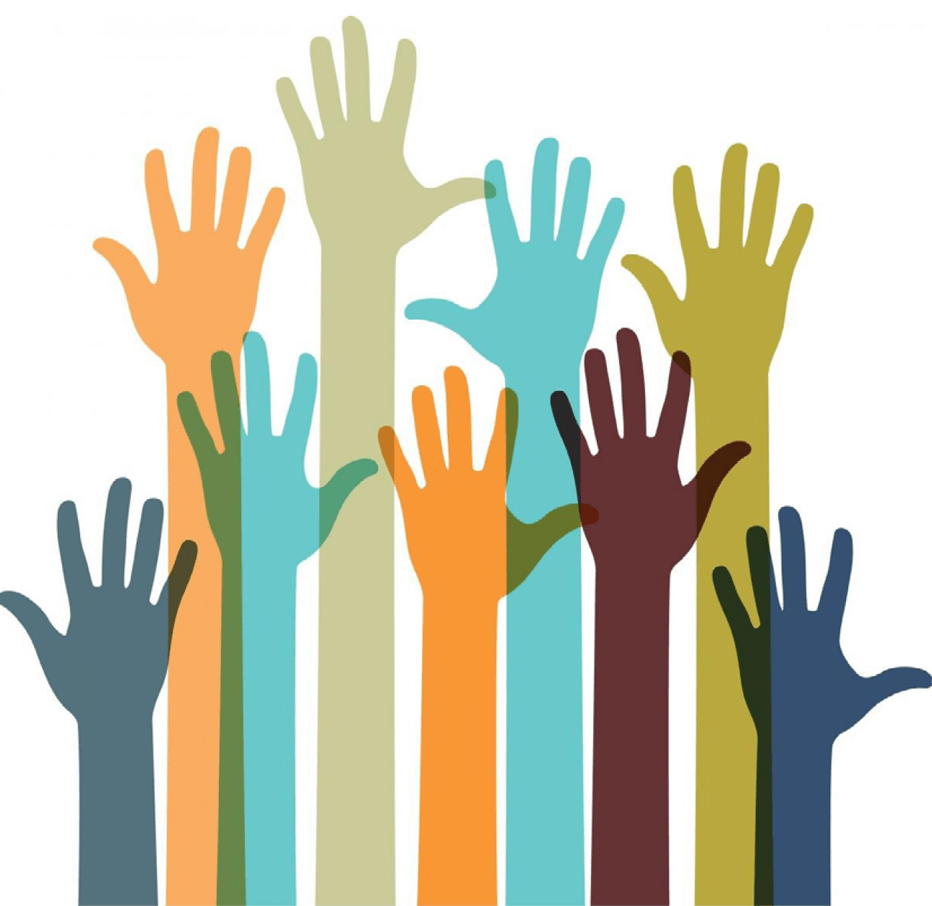
We are in a world that seems to be we don’t know where to walk. We see a conflict here, another conflict there and what we feel is that something or possibly many activities are out of control or out of the system to which they belong. We have governments that ask or rather force their governed to follow a path that doesn’t correspond to growth as human beings. We wonder what happens in a world where we see that 10% of the population only intends to be richer every day. We are witnesses of the extreme poverty of many human beings, of the hunger and death by hunger of other beings, of children who die in the first years of life because they are born with all the deficiencies that originate from an unprotected pregnancy of their mothers. We are also witnesses to the little well-being achieved by the vast majority of human beings: they work and work and for education, for housing, for health, for a decent place to live, they barely reach an objective. Deaton’s definition of wellness is beautiful: “By the term wellness i mean all the good things for a person that make life good. Well-being includes material well-being, such as income and wealth; physical and psychological well-being, represented by health and happiness; and education and the ability to participate in civil society through democracy and the rule of law”. (Deaton, 2015, pp. 41-42) This concept of well-being doesn’t indicate that people have to be owners of the planet Earth: it means a dignified life, a life that is satisfied with being lived. Is the life that so many human beings on the planet have worth living? The question is what do they plan to do with so much money that 10% owner of the world’s wealth? What do the rulers plan to do when they keep their ruled in a condition of slavery where only those who rule and their friends get rich and have rights? In this stage of the History of Humanity we are witnessing a great conflict and the conflict has as background the sustainable development of the life of the planet for the life of human beings. Those who want to maintain development based on dirty energy fight and oppose everything that is change. The question is: Where do you plan to live when the death of the planet occurs? If our planet doesn’t live the human beings, until now, we have nowhere to live. What else do we expect after a pandemic and now the fight for sustainable development? According to Savater about the pandemic: Now we must add the fight for sustainable development. “It is as if we had to wait 21 centuries and a plague to realize that the others are important.” (Savater, 2020, Reflections, Ethic) The question is. Where are the others? In 2021 Summits were held to seek solutions for sustainable development.
The Summits were: The United Nations Organization (UN), in Glasgow, Scotland, United Kingdom and that of the Group of 20 (G-20), in Rome, Italy. The purpose of the G-20 conference was to resolve the global financial crisis. The G-20 Italy Summit focused on the legal regulation of the 2015 Paris Agreement and climate change. The agreements didn’t have the great scope that was expected: they only achieved investment to help emerging countries. Regarding the use of coal, it would be expected to see the situation of the countries. Little is said about health and Covid-19, although poor countries continue to have problems vaccinating their entire population. An agreement was reached on cultural monuments, an issue that few now think about. The Summit of Nations -UNin Glasgow was called (COP26) Conference of the Parties. The agreements tried to gather the pending of other summits that hadn’t reached the corresponding legal framework, such as the Earth Summit, in 1992, in Rio de Janeiro, Brazil and the Paris Agreement of 2015 to maintain the temperature at 1.5 Celsius because otherwise, the forest fires will destroy the vegetation and therefore the food that we take from nature.
The United Nations Organization for Education, Science and Culture (UNESCO) is extending until 2050 the proposal it had for an education that would generate sustainable development which was first for 2015, then until 2030 and now until 2050. Nowadays we are witnessing the mutations of the pandemic, the situation of the supply chain and the open conflict of countries that don’t want to change their economies to generate the sustainable development that planet Earth needs and the possible life for human beings.
The questions are: What about the virtues in human beings? Why can’t human beings take care of each other? Why do human beings live as if others didn’t exist? Where are the missing virtues? Why have we not learned to be proactive? Why can’t we make the activities better and better? Why can’t we tell others ‘what do you have’? What is wrong with you? Why can’t we tell others in this way it is possible that what you are doing, it will be better? Why in our world have human beings only learned to look for their own good? We have to learn to understand what freedom is. We can be proactive and let others decide what they want to do but not without having put the positive before the other human being. The crisis we are experiencing today must have sustainable development as a solution. The crisis we are living today must have as a solution that human beings learn to be proactive with other human beings.
BIBLIOGRAPHY. Deaton, A. (2015). El Gran Escape. Salud, riqueza y los orígenes de la desigualdad. México: FCE • Organización de las Naciones Unidas para la Educación, la Ciencia y la Cultura (UNESCO). Caminos hacia 2050 y más allá. Retrieved from: https://www.iesalc.unesco.org/wp-content/ uploads/2021/11/Pathways-to-2050-and-beyond_ESP-1.pdf • Organización de las Naciones Unidas para la Educación, la Ciencia y la Cultura (UNESCO). Pensar más allá de los límites. Perspectivas sobre los futuros de la educación superior hasta 2050–25 de mayo de 2021. Retrieved from: https://www.iesalc. unesco.org/2021/05/26/informe-sobre-el-futuro-de-la-educacion-superior-preve-respuestas- colectivas-y-holisticas-a-los-retos-mundiales/
Learning
Home Education Only takes 1/10th the time of classroom and online school.
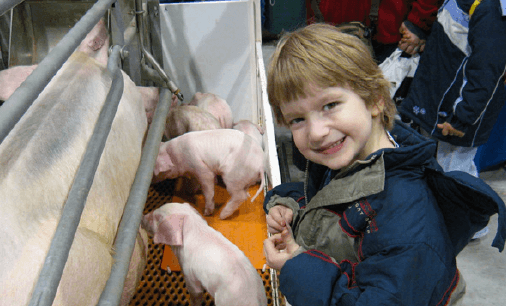
Home education provided via travel or within the community was the method of learning for thousands of years, before school as a government institution became popular in the early- 1800s. … When parents are not the teachers, but the child is learning, we use the term “self-directed education” or “unschooling” to describe learning via home, community and travel. Home education take less time because: 1 There is no busy work in home education. Parents give their kids pretests and if the kids know the concepts, they skip the assignments and move on to the next concept they don’t know. … 2 Unlike teaching in a classroom, there is no government mandated amount of time that parents are forced to “instruct” their kids so they don’t have to stretch out the “instructional time” … 3 Unlike teaching in a classroom, or online, you can use experiences to teach which include fun activities like board games, videos, discussions, projects and field trips which bring learning to life. … 4 You can skip things that you consider irrelevant. Facts, skills and activities that won’t stick in your child’s brain, but that they can truly learn when they really need it and it brings meaning to them. 5 There is an incredible amount of waiting time in and around school. Imagine the difference between throwing a dinner party at home for thirty people, and just having a quick supper … Read full text:
Suderbyn Ecovillage where volunteers relearn the skills the world forgot.
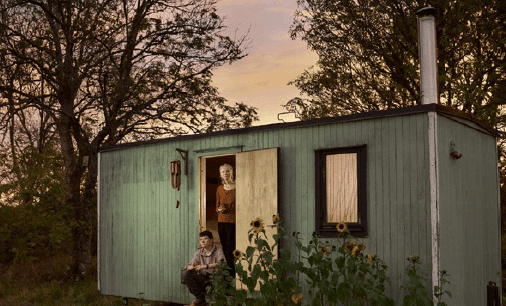
The Swedish island of Gotland began its existence millions of years ago as a reef in the warm waters near the equator, before the drift and shift of continental plates placed it in its current location in the middle of the Baltic Sea. As a result, the island’s limestone-rich landscape, long sandy beaches and sculptural sea stacks give it an otherworldly beauty. In a way, the island’s anomalous nature makes it the perfect setting for Suderbyn, a unique ecovillage that is home to a diverse community of international volunteers and some 35 longterm residents united under the common goal of leading a more sustainable lifestyle. It is one of an estimated 10,000 ecovillages around the world. … This approach also sees that Suderbyn residents, the land, and the infrastructure work together to create zero waste and resilience seen in natural systems. Antoine Arquié describes it as “closing the circle,” with one such example being the reuse of the community excrement and urine to fertilise the gardens “the same way a plant’s waste, oxygen, is a resource to us, our waste is a resource to the plants” he says. The garden has produced several different foods this year, including carrots, beans, and peas, but next year may be completely different due to the process of crop rotation designed to keep the soil healthy. … Read full text:
AIU makes a huge contribution to the world by giving new scient ifics the space for original investigations and research. Visit MyAIU Evolution
Ghosts Coronavirus viral fragments found lingering in the gut.
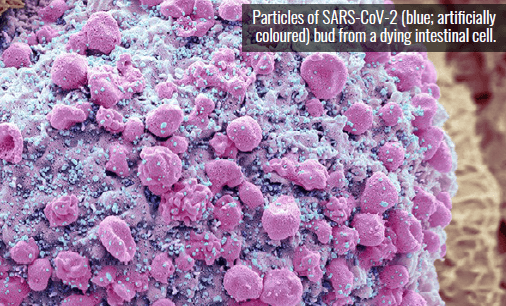
In the chaos of the first months of the coronavirus pandemic, oncologist and geneticist Ami Bhatt was intrigued by widespread reports of vomiting and diarrhoea in people infected with SARSCoV- 2. “At that time, this was thought to be a respiratory virus,” she says. Bhatt and her colleagues, curious about a possible link between the virus and the gastrointestinal symptoms, began to collect stool samples from people with COVID-19. Thousands of miles away from Bhatt’s laboratory at Stanford Medicine in California, gastroenterology internist Timon Adolph was puzzled by accounts of gut symptoms in infected people. Adolph and his colleagues [in Austria] started to assemble gastrointestinaltissue biopsies. Two years into the pandemic, the scientists’ foresight has paid off: both teams have recently published results suggesting that pieces of SARS-CoV-2 can linger in the gut for months after an initial infection. The findings add to a growing pool of evidence supporting the hypothesis that persistent bits of virus —coronavirus “ghosts”, Bhatt has called them— could contribute to the mysterious condition called long COVID. Even so, Bhatt both urges scientists to keep an open mind and cautions that researchers have not yet nailed down a link between persistent viral fragments and long COVID. “Additional studies still need to be done —and they’re not easy,” she says. …
New nanobots Can swim around a wound and kill bacteria.
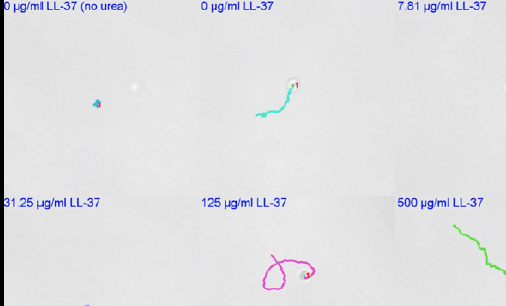
For over a decade, Samuel Sánchez, a chemist with the Institute for Bioengineering of Catalonia, in Barcelona, has been envisioning nanobots that could carry useful payloads, like cancer drugs or antibiotics, through the body’s viscous fluids. Picture a spherical particle of silica, which functions as a chassis. Sánchez has shown that you can dot its surface with a mess of special proteins that propel the particle through fluid, like little motors. His lab has experimented with different chassis, motors, and cargo. In research published in late April, they joined forces with antibiotics researchers. The team loaded silica nanobots with experimental antibiotics —including one derived from wasp venom— to treat infected wounds on mice. The nanobots, which were dropped onto one end of an infected wound, traveled through the skin to treat the entire area —the first report of nanobots killing bacteria in animals. “We see that the whole wound gets covered. The machines can actually travel around the wound and clear the infection as they go,” says César de la Fuente, a bioengineer at the University of Pennsylvania who led the project with Sánchez. That matters, because drugs normally depend on diffusion, or the process of passively spreading through the body’s fluids. If the most perfect antibiotic … Read full text
Get a better knowledge about our rights and the way we can use them on a daily basis to prevent any abuse or limitations of them. Visit MyAIU Human Rights.
Jingna Zhang Born in Beijing and raised in Singapore

Jingna Zhang is a fine art photographer and art director working New York, Los Angeles, and Seattle. Inspired by the Pre-Raphaelites and Japanese anime, Jingna’s work interweaves Asian aesthetics with western art styles, bringing unique visions of painterly images to fashion and fine art photography. Prior to her work behind the camera, Jingna was a world-class air rifle shooter representing Singapore at the Commonwealth Games and World Cup; the only female founder of a North American sports team in StarCraft 2; and agent and consultant to concept artists with clients such as LucasArts, Amazon Publishing, and Sony Music Japan. Read full text:
Raven Chacon Pulitzer Prize for mus
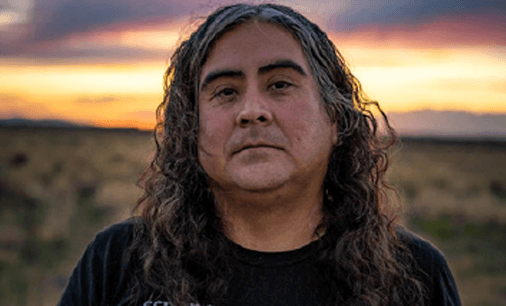
Raven Chacon’s Voiceless Mass received its world premiere Nov. 21, 2021 at the Cathedral of St. John the Evangelist in Milwaukee, Wis [USA]. Far from any kind of traditional Catholic mass, the piece was written by a Diné composer, performer and installation artist from the Navajo Nation, for chamber orchestra and pipe organ —specifically for the pipe organ at St. John the Evangelist. [May 9] Chacon became the first Native American composer to win the Pulitzer prize for music. In its note on the award, the Pulitzer jury called Voiceless Mass a “mesmerizing, original work … that evokes the weight of history in a church setting, a concentrated and powerful music expression with a haunting, visceral impact.” Until recent years, music Pulitzers have typically been handed to white men. But since 2013, five women … Read full text
Microplastics How much do you eat every week?
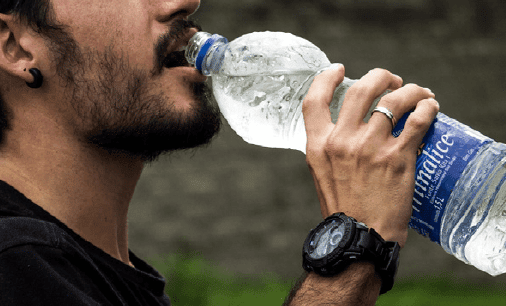
The Medical University of Vienna has recently published a study in the journal Exposure & Health which suggests that on average, five grams of plastic particles enter the human gastrointestinal tract per person, per week. … Discarded plastic breaks down into micro and nanoparticles entering our waterways and soil. Microplastics, which are between 0.001 and 5 mm in size, and nanoplastics, which are less than 0.001 mm eventually enter our food chain via seafood or even fruit and vegetables. They can also enter the body when we drink from plastic bottles. … or microbeads, which are used in many health and beauty products. … The research team … has stated that ingested particles passing through the gastrointestinal tract lead to changes in the composition of the gut microbiome. These changes are linked to metabolic diseases like obesity, diabetes and chronic liver disease. “The particles can trigger local inflammation and immune response, and nanoplastics in particular have been found to trigger chemical pathways involved in the formation of cancer,” reads the study. Microwaving food in china dishes instead of plastic containers and ventilating your house, are some of the solutions put forward to minimise the ingestion of plastic particles. … Read full text:
Live a better life learning how to keep your body, mind and soul balanced. Visit regularly MyAIU Body / MyAIU Mind / MyAIU Spirit and MyAIU Energy.
Human brain The uniqueness of each mind is written in its ever-changing circuitry.
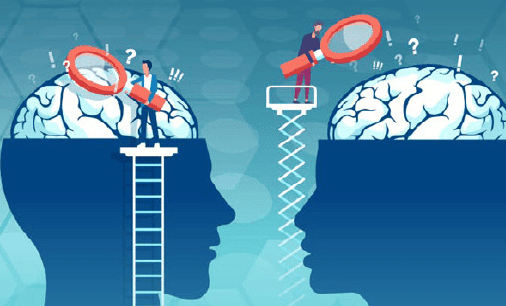
Our brains are identifiable as uniquely human through their common anatomical features, yet there is a tremendous amount of variability among human brains. … Brain size alone in humans can vary up to twofold, and region size commonly varies by this amount. The smallest variability in brain anatomy is found between identical twins. Yet MRI studies of identical twin babies show that differences in patterns of cortical folding can be used to tell them apart with 100 percent accuracy, just as the variations in their fingerprints can be used to tell them apart. … The same areas of the brain can look similar but function in radically different ways in different people. For example, the visual cortexes of congenitally blind persons become active when they read Braille with their fingers. This does not happen in sighted people. The visual cortexes of blind persons are also active when they hear sounds and language, whereas those of sighted people are hardly activated, if at all, by either auditory or somatosensory inputs. … Another feature of the human brain is the remarkable person-to-person variability in cortical lateralization, folding patterns, area sizes, and gray-matter thickness in different regions of the cortex. Some of this variability in the brain —which correlates with differences in personality, cognitive functions, and susceptibility to various neurological and psychiatric syndromes —is … Read full text: Read full text:
Mobile River Basin is being destroyed, bit by bit, in a silent massacre.
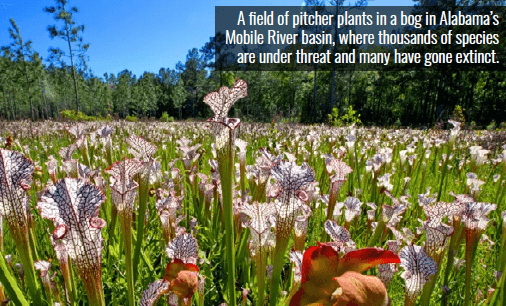
You won’t find people chaining themselves to trees to protect this place, or national environmental groups using pictures of it to sign up new members, because few know it exists. And yet, here it is —the Mobile River Basin, one of the richest in the world in terms of the sheer number of species and types of habitat. The major rivers and thousands of creeks feeding into this basin together form the largest inland delta system in the US, second only to the Mississippi in how much water it dumps into the Gulf of Mexico. The river system, the fourth-largest in the country … stretches from the northern edge of Alabama to the Gulf, draining parts of four states, and encompassing hundreds of thousands of acres of forest, from Appalachian hardwood stands to haunted cypress swamps. A dedicated band of locals know it for the incredible hunting and fishing it affords. But few know it for its greatest distinction. That’s a shame, for this is America’s Amazon, far and away the most biodiverse river network in North America. There are more species of oaks on a single hillside on the banks of the Alabama River than you can find anywhere else in the world. The Mobile River Basin makes Alabama home to more species of freshwater fish, mussels, snails, turtles and crawfish than any other state. … Nearly half of all extinctions in the continental US since the 1800s have occurred among creatures that lived …
Find Open Courses and a world of learning granted by AIU at courses.aiu.edu Help others study and change their lives. Visit MyAIU Pledge.
The perfect lawn A thriving place that’s welcoming to people and pollinators.

What is a pollinator-perfect lawn? It’s one illed with nectar-rich blooms and safe places for pollinators to rest. Of the 20 million acres of lawn in the US, unfortunately, much is manicured turf offering so little food and shelter that it might as well be pavement! Here’s what you can do: 1 Keep only the lawn areas you actually use. Have an area for play and entertaining, and convert the rest to a flower garden to nourish bees, butterflies, and hummingbirds. Adult monarchs, in particular, rely on nectar for all their energy. Plants in the sunflower family, which includes asters, black-eyed Susans, calendula, coreopsis, purple coneflowers and zinnias, are particularly nectar-rich. … 2 Create a mowable meadow. Plant a versatile blend of plants and let them develop into a lawn full of texture and natural beauty. … You’ll only need to mow it once per season! … Crocuses will bring color early … Strawberry and white clover condition soil, suppress weeds, and provide essential nutrients for bumblebees and honeybees. 3 Improve your existing lawn. Focus on soil health, aerate compacted areas, apply compost, and avoid toxic pesticides. You’ll eliminate your lawn’s dependency on chemical products, remove contaminants harmful to human, pet, and wildlife health, create a haven for pollinators, and have a healthy lawn. Read full text:
Caucasian Too many scientists still say that word.
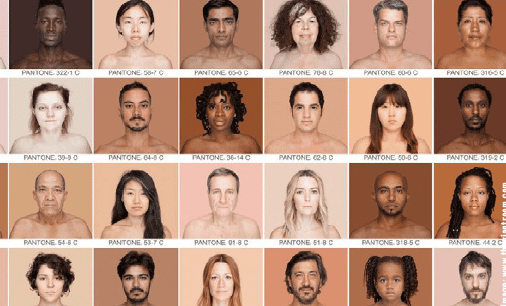
Of the ten clinical genetics labs in the US that share the most data with the research community, seven include ‘Caucasian’ as a multiple-choice category for patients’ racial or ethnic identity, despite the term having no scientific basis. Nearly 5,000 biomedical papers since 2010 have used ‘Caucasian’ to describe European populations. This suggests that too many scientists apply the term, either unbothered by or unaware of its roots in racist taxonomies used to justify slavery —or worse, adding to pseudoscientific claims of white biological superiority. … Many working in genomics do have a nuanced understanding of the issues and want to get things right. Still, I have been dismayed by how often the academics and clinicians I’ve encountered shy away from examining, or even acknowledging, how racism warps science. Decades of analyses have shown that ‘racial groups’ are defined by societies, not by genetics. Only the privileged have the luxury of opining that this is not a problem. … In the US, people with ancestry from the world’s two most populous countries, India and China, along with every other country on the continent, are collapsed into a single racial category called ‘Asian’. … We need to acknowledge that systemic racism, not genetics, is dominant in creating health disparities. It shouldn’t have taken the inequitable ravages of a pandemic to highlight that. …
Find support for your own unique art and design projects, or support other creative projects at MyAIU Research
Isle Royale Wolves may actually help the animals they prey on.

The 45-mile-long hunk of land, belonging to Michigan, offers some of the most interesting terrains for researchers examining how natural ecosystems work, and since 1958, researchers have continually monitored animal populations there. … new research published about wolves and moose in Isle Royale’s special environment provides fascinating insights into the relationship between predators and prey. Wolves take down moose with arthritis and kill them at an outsized pace, according to the study in Frontiers in Ecology and Evolution. The moose on Isle Royale might need wolves, the study suggests, to keep their populations healthy from disease. The research could offer data for fresh arguments in the divisive debates over wolf management roiling many communities, where some ranchers view the creatures as a threat to their livestock and livelihoods. … “The moose eat themselves out of house and home, literally, and then they have a massive die-off. They crash, and then it starts all over again,” Doug Smith said. Then came the wolves. They arrived on the island sometime around the 1940s … “By keeping wolves in Isle Royale, you keep the moose population in check, which means they don’t eat the whole forest up,” Smith said. “Without a predator, they repeat the whole cycle.” …
Find Open Courses and a world of learning granted by AIU at courses.aiu.edu Help others study and change their lives. Visit MyAIU Pledge.
Campus
How we became energy blind The world to come will be different from our expectations. The arc of human history informs the trajectory of our future.

We need to know who we are and how we got here: The ecology, biology, and physics —to know which doors remain open to us— and which lead to dead-ends. [Note from the author, Simon Michaux: This is at the core of our work. We live as part of a system —the human ecosystem. The parts, processes and interactions fit together in an emergent but logical way. If mankind is to navigate the coming decades without disaster to us or the natural world, we’ll need more humans understanding the scientific synthesis of what we truly face. For that, our history has much to tell us]. 4.5 billion years ago, stardust coalesced to form a planet.
A billion years later, simple life emerged. By 500 million years ago, a profusion of life had exploded on our blue green planet. Fast forward to 66 million years ago and dinosaurs were taken out by our planet’s most recent mass extinction and small shrewlike survivors continued an evolutionary line that would eventually become…. Us. [Note: I state that dinosaurs went extinct which is true other than birds, who are still with us. There is increasing evidence that when the asteroid hit, a mass extinction was already underway from volcanic release of CO2. The tiny shrew-like mammalian ancestors were probably quite a bit smaller than shown in this image, which the artist based on a tarsier]. Of all our hominid ancestors, one species would ultimately remain. Homo sapiens, a creature variously curious, creative, kind, cruel, cooperative, competitive, combative, and clever. When Earth’s climate warmed and stabilized around 10kya, Homo sapiens tribes who pivoted en masse to agriculture and pastoralism out-reproduced their hunter gatherer cousins. Unbeknownst to them, (and to most of us) this was a planet changing event. Sustained by new agricultural surplus, these early humans slowly spread out around the globe expanding trade and technology. For thousands of years, the average annual growth in the size of the human economy would be unnoticeable from one generation to the next. By the 16th century however, more complex social organization and advanced navigational technology kickstarted a unique period in human history. Yet even with these advances, human cultures remained powered by biomass and the muscles of humans and our draft animals, limiting growth.
Until in the early 19th century, 10,000 years after the agricultural revolution, humans discovered how to extract fossil energy and materials from under Earth’s surface to boost their economies. This new discovery of geologically ‘stored sunlight’ in the form of coal oil and gas changed everything. For the first time, human and animal labor played second fiddle to the power of these new energy sources. When combined with a machine, a gallon of gasoline could output the same work in a few minutes as a person laboring for an entire month. [Note: Chronologically, the image shown isn’t correct —we first used coal to power steam engines, then much later we used gasoline/diesel (via oil) to power tractors. But the artist made this look very cool so we kept it. The relationship between human labor potential and fossil fuel labor potential is simple to calculate. A barrel of oil contains 5,800,000 BTU, which translates to 1,760 kilowatt Hours (kWh) of work potential.
This compares to around 0.6 kWh of energy metabolism per average adult human per 8 hour work day. Then 1760/0.6=2,933 days. Humans (in industrialized rich countries at least) work 5 days per week 50 weeks per year so if we divide 2,933 by 250 it works out to 11.7 years of human labor potential per barrel of oil. But humans are much more efficient at directing muscle work towards a task (think how much energy from gasoline pushing a car is dissipated as waste heat vs how much of your energy is directed towards pushing a wheelbarrow of soil). Using a conversion factor of 60%, this brings the 11.7 years of labor per barrel down to 4.7 years (rounded down to 4.5). Even this number could be high or low depending on the assumptions. On small tasks, humans are incredibly flexible and efficient. But on brute force tasks, no amount of humans can do the work of energy dense fossil hydrocarbons (flying a jet across the ocean, or driving a full semi-truck over a mountain pass in winter). Also, though human bodies require food, heat, shelter 24 hours per day, so 4.5 years per barrel could be conservative. This concept of the massive subsidization of human economies by fossil fuels was first highlighted by Buckminster Fuller in his appellation of ‘energy slaves’].
We increasingly replaced manual human tasks with machines, at a tiny fraction of the cost. The result: higher profits, higher wages and cheaper goods. Sudden access to this bank account of stored carbon energy turbocharged our populations, access to goods and services, technology and again quadrupled our economic growth rate. Yet humanity’s great acceleration was still ahead. In the latter half of the 20th century, with this new power source, and an upgrade from coal to higher quality liquid oil, the human economy’s average growth rate doubled yet again, to now over 30x what it had averaged during the last few thousand years. Compared to a global labor force of around 5 billion real humans, the machines and work powered by access to buried carbon energy added the equivalent power of 500 billion human workers. [Note: Globally, we use 35.4 billion barrels of oil per year, but if we equivalently convert all the coal and natural gas we use, the total becomes 100 billion barrels of oil. The conversion efficiency of coal and natural gas is different depending on the technology and process. To simplify this statistic, we assume the same 60% conversion loss, resulting in 100 billion X 4.5 years per barrel = 450 billion human worker equivalents per year (rounded to 500 billion for artistic simplicity). In contrast, of the 7.9 billion humans alive, excluding children and retired people, the actual human labor force is 4.5-5 billion people]. Access to these fossil energies and materials brought billions more humans into existence and brought billions more out of poverty. And led to the creation of new myths, institutions, and expectations.
Our ancestors’ lives were tightly linked to the natural flows of the Earth —the sun, the rain, and the soil. But during this moonshot of growth and consumption, our fundamental tether to nature was first neglected and then forgotten. The main inputs to our economies were now mostly free —we merely had to pay for the cost of their extraction, not the cost of their creation, their true worth, nor their pollution. To our ancestors, the benefits from carbon energy would have appeared indistinguishable from magic. And, instead of appreciating this giant one time windfall, we developed stories that our newfound wealth and progress had emerged purely from human ingenuity. We had become Energy Blind.
[Note: Modern economic theory assumes that productivity (which underpins our wealth and material progress) is a product of labor and capital. Energy is assumed to be just another input with its unit price representing its contribution to economic output. One barrel of oil represents almost 5 years of human labor, and human economies only pay the cost of its extraction (currently around $50 in 2022), not the tens of millions of years of natural processes to create it. We have underpaid for the main input to human economies —and economic texts do not recognize this fact].
Read full text and watch video from The Great Simplification animated series:
Help others study and change their lives. Visit MyAIU Pledge. Learn how to have a better financial control. Visit MyAIU Money.
Water-activated luminaries.
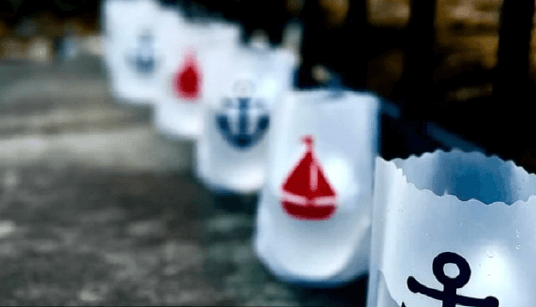
Reusable water-activated, flameless tea light luminary for parties, weddings, and events. Can be used indoors or outdoors. www.thegrommet.com
Dew drop butterfly house.
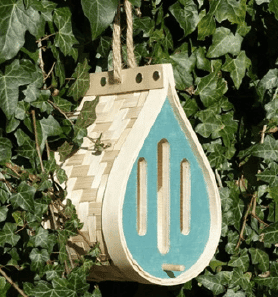
Made of woven bamboo. Small back door allows access to insert twigs, or pieces of bark, which attract butterflies. Place in a sheltered spot with plenty of sunshine and close to pollinating plants. www.thegrommet.com
Gardener’s tool bag & stool.

Tend to your garden in comfort and keep your tools close at hand with this foldable stool. Made from waterresistant nylon with a steel frame, this stool has a bag underneath with 21 pockets for various- sized garden tools and a roomy interior which can be used for other tools, seeds, bulbs and more. store.moma.org
Muna Abdi.
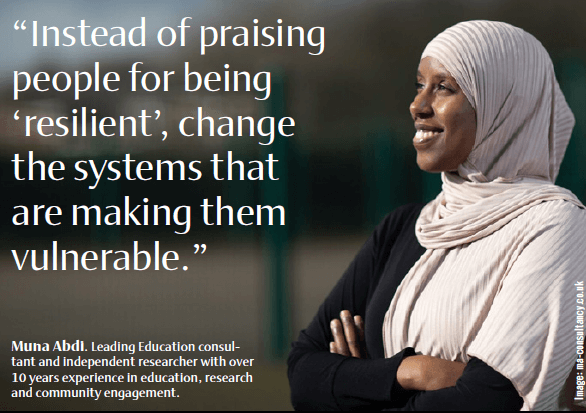
Jingna Zhang is a fine art photographer and art director working New York, Los Angeles, and Seattle. Inspired by the Pre-Raphaelites and Japanese anime, Jingna’s work interweaves Asian aesthetics with western art styles, bringing unique visions of painterly images to fashion and fine art photography. Prior to her work behind the camera, Jingna was a world-class air rifle shooter representing Singapore at the Commonwealth Games and World Cup; the only female founder of a North American sports team in StarCraft 2; and agent and consultant to concept artists with clients such as LucasArts, Amazon Publishing, and Sony Music Japan. Read full text:
Good Advice
24. MAKE WHAT IS VALUABLE IMPORTANT
Instead of thinking about what is profitable, think about what is valuable. Invest in others and you will grow your portfolio.
Source: www.inc.com
Bachelor's of Business Management - SCHOOL OF BUSINESS AND ECONOMICS
The Bachelor of Business Management (BS, BA) program objective is to provide professionals with the right skill set in a range of key business disciplines with specific emphasis on management skills by blending conceptual theoretical framework with practical applications and covering basic discipline material through to more specialized requirements in the management discipline. The Bachelor of Business Management (BS, BA) program is offered online via distance learning. After evaluating both academic record and life experience, AIU staff working in conjunction with Faculty and Academic Advisors will assist students in setting up a custommade program, designed on an individual basis. This flexibility to meet student needs is seldom found in other distance learning programs. Our online program does not require all students to take the same subjects/courses, use the same books, or learning materials. Instead, the online Bachelor of Business Management (BS, BA) curriculum is designed individually by the student and academic advisor. It specifically addresses strengths and weaknesses with respect to market opportunities in the student’s major and intended field of work. Understanding that industry and geographic factors should influence the content of the curriculum instead of a standardized onefits- all design is the hallmark of AIU’s unique approach to adult education. This philosophy addresses the dynamic and constantly changing environment of working professionals by helping adult students in reaching their professional and personal goals within the scope of the degree program.
Important:
Below is an example of the topics or areas you may develop and work on during your studies. By no means is it a complete or required list as AIU programs do not follow a standardized curriculum. It is meant solely as a reference point and example. Want to learn more about the curriculum design at AIU? Go ahead and visit our website, especially the Course and Curriculum section: www.aiu.edu/CourseCurriculum.html https://wp24.aiu.edu/CourseCurriculum.html
Communication & Investigation (Comprehensive Resume)
Organization Theory (Portfolio)
Experiential Learning (Autobiography)
Seminar Administrative Development (Book Summary)
Seminar Cultural Development (Practical Experience)
Seminar International Development (Publications)
Operations
Organizational behavior
Leadership challenges
Customer service
Human resource management
Marketing
Risk management
Professional sales
Accounting for business
Information systems and applications
Management in the marketplace
Business process management
Entrepreneurial management
The business environment
Business statistics
Professional communication
Strategic thinking for managers
Bachelor Thesis Project
MBM300 Thesis Proposal
MBM302 Bachelor Thesis (5,000 words)
aiu.edu/apply-online.html
Pioneer Plaza/900 Fort Street Mall 410
Honolulu, HI 96813
800-993-0066 (Toll Free in US)
808-924-9567 (Internationally)
Each Bachelor graduate is encouraged to publish their research papers either online in the public domain or through professional journals and periodicals worldwide.
About Us

Accreditation
Atlantic International University offers distance learning degree programs for adult learners at bachelors, masters, and doctoral level. With self paced program taken online, AIU lifts the obstacles that keep professional adults from completing their educational goals. Programs are available throughout a wide range of majors and areas of study. All of this with a philosophically holistic approach towards education fitting within the balance of your life and acknowledging the key role each individual can play in their community, country, and the world.
Atlantic International University is accredited by the Accreditation Service for International Schools, Colleges and Universities (ASIC). ASIC Accreditation is an internationally renowned quality standard for colleges and universities. Visit ASIC’s Directory of Accredited Colleges and Universities. ASIC is a member of CHEA International Quality Group (CIQG) in the USA, an approved accreditation body by the Ministerial Department of the Home Office in the UK, and is listed in the International Directory of the Council for Higher Education Accreditation (CHEA). The University is based in the United States and was established by corporate charter in 1998.
Our founding principles are based on the United Nations Universal Declaration of Human Rights; per article 26, AIU believes that Higher Education is a Human Right. The University has implemented a paradigm shifting educational model for its academic programs that have allowed it to move closer to this goal through the self-empowerment of its students, decentralization of the learning process, personalized open curriculum design, a sustainable learning model, developing 11 core elements of the Human Condition within MYAIU, and utilizing the quasi-infinite knowledge through the use of information technology combined with our own capacity to find solutions to all types of global issues, dynamic problems, and those of individuals and multidisciplinary teams. Due to these differentiations and the university’s mission, only a reputable accrediting agency with the vision and plasticity to integrate and adapt its processes around AIU’s proven and successful innovative programs could be selected. Unfortunately, the vast majority of accrediting agencies adhere to and follow obsolete processes and requirements that have outlived their usefulness and are in direct conflict with the university’s mission of offering a unique, dynamic, affordable, quality higher education to the nontraditional student (one who must work, study what he really needs for professional advancement, attend family issues, etc.). We believe that adopting outdated requirements and processes would impose increased financial burdens on students while severely limiting their opportunities to earn their degree and advance in all aspects. Thus, in selecting the ASIC as its accrediting agency, AIU ensured that its unique programs would not be transformed into a copy or clone of those offered by the 10,000+ colleges and universities around the world. Since ASIC is an international accrediting agency based outside the United States, we are required by statute HRS446E to place the following disclaimer: ATLANTIC INTERNATIONAL UNIVERSITY IS NOT ACCREDITED BY AN ACCREDITING AGENCY RECOGNIZED BY THE UNITED STATES SECRETARY OF EDUCATION. Note: In the United States and abroad, many licensing authorities require accredited degrees as the basis for eligibility for licensing.

In some cases, accredited colleges may not accept for transfer courses and degrees completed at unaccredited colleges, and some employers may require an accredited degree as a basis for eligibility for employment. Potential students should consider how the above may affect their interests, AIU respects the unique rules and regulations of each country and does not seek to influence the respective authorities. In the event that a prospective student wishes to carry out any government review or process in regards to his university degree, we recommend that the requirements of such are explored in detail with the relevant authorities by the prospective student as the university does not intervene in such processes. AIU students can be found in over 180 countries, they actively participate and volunteer in their communities as part of their academic program and have allocated thousands of service hours to diverse causes and initiatives. AIU programs follow the standards commonly used by colleges and universities in the United States with regards to the following: academic program structure, degree issued, transcript, and other graduation documents. AIU graduation documents can include an apostille and authentication from the US Department of State to facilitate their use internationally.
The AIU Difference
It is acknowledged that the act of learning is endogenous, (from within), rather than exogenous.
This fact is the underlying rationale for “Distance Learning”, in all of the programs offered by AIU. The combination of the underlying principles of student “self instruction”, (with guidance), collaborative development of curriculum unique to each student, and flexibility of time and place of study, provides the ideal learning environment to satisfy individual needs.
AIU is an institution of experiential learning and nontraditional education at a distance. There are no classrooms and attendance is not required.
The AIU Difference
MISSION:
To be a higher learning institution concerned about generating cultural development alternatives likely to be sustained in order to lead to a more efficient administration of the world village and its environment; exerting human and community rights through diversity with the ultimate goal of the satisfaction and evolution of the world.
VISION :
The empowerment of the individual towards the convergence of the world through a sustainable educational design based on andragogy and omniology.
Organizational Structure
Dr. Franklin Valcin
President/Academic Dean
Dr. Ricardo Gonzalez
Chief Operation Officer
and MKT Director
Dr. Miriam Garibaldi
Viceprovost for Research
Dr. Ofelia Miller
Director of AIU
Juan Pablo Moreno
Director of Operations
Paula Viera
Director of
Intelligence Systems
Felipe Gomez
Design Director / IT Supervisor
Daritza Ysla
IT Coordinator
Nadeem Awan
Chief Programming Officer
Dr. Jack Rosenzweig
Dean of Academic Affairs
Dr. Edward Lambert
Academic Director
Dr. Ariadna Romero
Advisor Coordinator
Nadia Gabaldon
Academic Coordinator
Jhanzaib Awan
Senior Programmer
Leonardo Salas
Human Resource Manager
Benjamin Joseph
IT and Technology Support
Rosie Perez
Finance Coordinator
Chris Soto
Admissions Counselor
Dr. José Mercado
Chief Executive Officer
Chairman of the Board of Trustees
Linda Collazo
Logistics Coordinator
Irina Ivashuk
Alumni Association
Coordinator
Clara Margalef
Director of Special Projects
of AIU
David Jung
Corporate/Legal Counsel
Bruce Kim
Advisor/Consultant
Thomas Kim
Corporate/
Accounting Counsel
Camila Correa
Quality Assurance Coordinator
Maricela Esparza
Administrative Coordinator
Chris Benjamin
IT and Hosting Support
Mayra Bolivar
Accounting Coordinator
Roberto Aldrett
Communications Coordinator
Giovanni Castillo
IT Support
Jaime Rotlewicz
Dean of Admissions
Dr. Mario Rios
Academic Advisor
Michael Phillips
Registrar’s Office
Rene Cordon
Admissions Support
Jenis Garcia
Admissions Counselor
Ricardo González, PhD
Provost
Dr. Silvia Restorff
Academic Advisor
Dr. Prakash Menon
Academic Advisor
Carlos Aponte
Telecommunications
Coordinator
Dr. Nilani Ljunggren De Silva
Academic Advisor
Dr. Scott Wilson
Academic Advisor
Dr. Mohammad Shaidul Islam
Academic Advisor
Dr. Edgar Colon
Academic Advisor
Deborah Rodriguez
Academic Tutor Coordinator
Cyndy Dominguez
Academic Tutor Coordinator
Kinmberly Diaz
Admissions Support Tutor
Amalia Aldrett
Admissions Coordinator
Sandra Garcia
Admissions Coordinator
Jose Neuhaus
Admissions Support
Junko Shimizu
Admissions Coordinator
Veronica Amuz
Admissions Coordinator
Alba Ochoa
Admissions Coordinator
Contact Us
Atlantic International University
900 Fort Street Mall 905 Honolulu, HI 96813
Quick Links
Home | Spanish | Online Courses | Available Courses | Vrtual Campus | Career Center | Available Positions | Ask Career Coach | The Job Interview | Resume Writing | Accreditation | Areas of Study | Bachelor Degree Programs | Masters Degree Programs | Doctoral Degree Programs | Course & Curriculum | Human Rights | Online Library | Representations | Student Publication | Sponsors | General Information | Mission & Vision | School of Business and Economics | School of Science and Engineering | School of Social an Human Studies | Media Center | Admission Requirements | Apply Online | Tuition | Faculty & Staff | Distance Learning Overview | Student Testimonials | Frequently Asked Questions | Register for Program | Privacy Policy | FAQ
